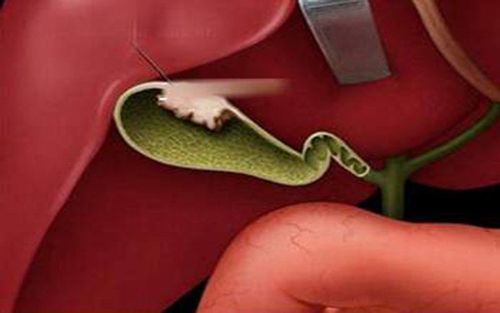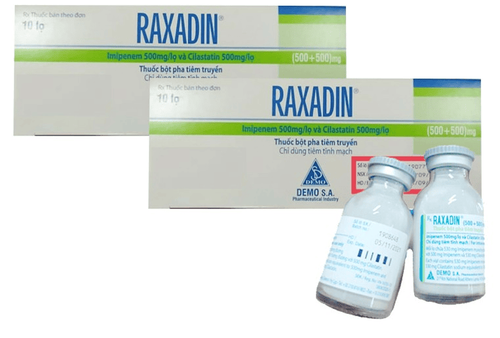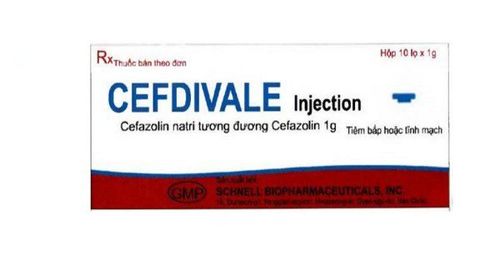This is an automatically translated article.
Piperacillin is a broad-spectrum penicillin antibiotic, belonging to the beta-lactam family. The drug is used in the treatment of bacterial infections in the body.1. Uses of Piperacillin
Piperacillin is a broad-spectrum ureido penicillin that destroys gram-positive and gram-negative aerobic and anaerobic bacteria by inhibiting bacterial cell wall synthesis. Piperacillin is prepared in the form of powder for injection, respectively Piperacillin 1g, Piperacillin 2g, Piperacillin 4g,...
Piperacillin is indicated in the following cases:
Severe infections, acute and chronic respiratory tract infections bacteremia, bacteremia, skin and soft tissue infections, biliary tract infections, uncomplicated gonorrhea caused by penicillin-sensitive gonococci and complicated urinary tract infections caused by susceptible organisms, especially due to Pseudomonas; In case patients have systemic infections caused by Pseudomonas or patients with neutropenia, it is necessary to combine Piperacillin with aminoglycosides for treatment; Infections after uterine and abdominal surgery. Piperacillin is contraindicated in cases of people with hypersensitivity to penicillins, cephalosporins, beta-lactamase inhibitors (Piperacillin in combination with tazobactam).
2. How to take Piperacillin
Piperacillin drug is injected as the sodium salt, the dose is calculated according to Piperacillin. Specifically, 1.04g of Piperacillin sodium is equivalent to about 1g of Piperacillin.
The drug can be administered by slow intravenous injection for 3-5 minutes, by intravenous infusion for 20-40 minutes or by deep intramuscular injection. Should not be injected intramuscularly more than 2g/time (for adults) or more than 0.5g/time (for children).
Intravenous injection: 1g Piperacillin mixed with at least 5ml distilled water for injection; Intravenous infusion: 1g Piperacillin mixed with at least 5ml distilled water, continue to dilute with the infusion solution to 50ml, infusion within 20-40 minutes; Deep intramuscular injection: 1g Piperacillin powder mixed with 2ml distilled water or 0.5-1% lidocaine solution (without epinephrine) to achieve a concentration of 1g/2.5ml. Suitable diluents for reconstitution are: 5% glucose solution, Ringer lactate solution, 0.9% sodium chloride, 5% glucose and 0.9% sodium chloride solution, 30% glucose, 6% dextran in solution 0.9% sodium chloride solution, 20% mannitol, distilled water for injection.
Suitable diluents for mixing Piperacillin + tazobactam are: 5% glucose solution, distilled water for injection, 0.9% sodium chloride solution.
Medicines need to be mixed immediately before use. Any remaining solution after use must be discarded. The reconstituted drug solution remains chemically stable for at least 24 hours at room temperature or 48 hours at 4°C.
3. Piperacillin dosage
Dosage of Piperacillin in adults is as follows:
Severe or complicated infections: Intravenous at a dose of 200-300mg/kg/24 hours. The usual dose is 3-4g, every 4-6 hours; Severe, life-threatening infections suspected to be caused by Klebsiella or Pseudomonas: Daily dose of 16g or more, usually 2-4g/time, every 4-6 hours, up to 24g/day (intravenously) circuit); Acute cholangitis: Intravenous injection 4g/time, every 6 hours/time; Malignant otitis externa: Intravenous injection 4-6g/time, every 4-6 hours/time in combination with tobramycin; Mild or uncomplicated infections: Intravenous injection 100-250mg/kg/day, usual dose is 2g/time, every 6-8 hours or 4g/times every 12 hours or injection corn 2g/time every 8-12 hours/time; Uncomplicated gonorrhea: Use a single dose of 2g, intramuscularly; can take 1g probenecid 30 minutes before piperacillin injection; Prevention of infection in surgery: Take 2g dose before surgery, then use at least 2 more doses, each dose 2g 4-6 hours apart, within 24 hours after surgery. Dosage of Piperacillin in children is as follows:
Children 1 month - 12 years: The usual dose for mild and moderate infections is 100 - 150mg/kg/24 hours, divided into 4 times. If infection is severe, dose 200-300mg/kg/24 hours, divided dose 4-6 hours/time; Infants 0 - 1 month old: Adjust the dose as follows: Infants < 7 days old or weighing less than 2kg: Use a dose of 150mg/kg/day, divided into 3 times; Newborns > 7 days old or weighing more than 2kg: 300mg/kg/day, divided into 3-4 small doses. Dosage of Piperacillin for other subjects:
Adults with renal impairment: Need to adjust dose based on creatinine clearance (Clcr): Clcr 41 - 80ml/min: Dose 4g/time, 8 hours apart/ times (no dose adjustment required); Clcr 20-40ml/min: Take a dose of 3-4g/time, 8 hours apart/time; Clcr < 20ml/min: Take a dose of 3-4g, every 12 hours; Patients on hemodialysis: Use 2g dose, 8 hours apart; immediately after dialysis use a dose of 1g; Children with renal impairment: Dosage and injection interval depend on the drug concentration in the blood plasma. Children with severe urinary tract infections: Use a dose of 100 - 150mg/kg/24 hours, intravenously. Overdose: Doses of 24 g/day in adults have no adverse effects. Symptoms of overdose are usually motor excitability, convulsions. In case of drug overdose, doctors often prescribe treatment by using anticonvulsants such as diazepam, barbiturates.
4. Piperacillin side effects
Some side effects when using Piperacillin include:
Common: Systemic (allergic skin rash, fever, pain, erythema after intramuscular injection), blood (eosinophilia), circulation (thrombophlebitis), gastrointestinal (nausea, diarrhea), liver (reversible transaminase elevation); Uncommon: Blood (transient neutropenia, agranulocytosis, leukopenia); Rare: Systemic (anaphylaxis), gastrointestinal (pseudomembranous enteritis), skin (erythema multiforme, urticaria, Stevens-Johnson syndrome), urinary (interstitial nephritis); Patients with cystic fibrosis when using Piperacillin often have skin reactions and fever. Physicians should be aware of the patient's previous hypersensitivity reactions to penicillins, cephalosporins, or other allergens. Skin tests should be performed prior to administration of Piperacillin. In the event of a severe allergic reaction to Piperacillin, it is necessary to discontinue the drug, administer adrenaline and emergency measures to treat anaphylaxis. In addition, pain at the injection site can be reduced by mixing the injection powder with a 0.5-1% solution of lidocaine.
5. Precautions when using Piperacillin
Some notes for patients to remember when using Piperacillin:
Use Piperacillin with caution in people with impaired kidney function; Severe, prolonged diarrhea should be associated with antibiotic-induced pseudomembranous enterocolitis and can be treated with metronidazole; Pay attention to the amount of sodium in the therapeutic doses of the drug in patients with sodium and water accumulation, especially when taking high doses of Piperacillin; Precautions regarding dosage and administration of Piperacillin in children and neonates; The risk of bleeding may be seen in patients treated with beta-lactam antibiotics, often occurring in patients with renal failure. If the patient has thrombocytopenia or bleeding due to antibiotics, the drug should be discontinued and appropriate treatment; Piperacillin can be used in pregnant women and nursing mothers (consult your doctor).
6. Piperacillin drug interactions
Some drug interactions of Piperacillin:
Piperacillin has a synergistic effect with aminoglycosides, but these two drugs must be injected separately; Piperacillin can be used in combination with beta-lactamase-resistant penicillins but must not be used in combination with cefoxitin for the treatment of infections caused by Pseudomonas; Piperacillin prolongs the action of vecuronium, so caution should be exercised when Piperacillin is used to prevent infection during surgery involving vecuronium or similar neuromuscular blocking agents; Piperacillin used concurrently with metronidazole needs to be injected, taken separately, not mixed; Penicillins can reduce the excretion of methotrexate; Some preparations that combine Piperacillin with tazobactam (8/1 by weight) can extend the spectrum of action of Piperacillin to strains normally resistant to beta-lactamase secretion; Piperacillin should not be mixed in the same solution with injectable metronidazole, aminoglycosides or with solutions containing only sodium bicarbonate. When using Piperacillin, patients should inform their doctor about their health status, history of allergies, and any medications they are taking. This helps doctors make appropriate indications, avoiding drug interactions or unpredictable side effects.
Please dial HOTLINE for more information or register for an appointment HERE. Download MyVinmec app to make appointments faster and to manage your bookings easily.













